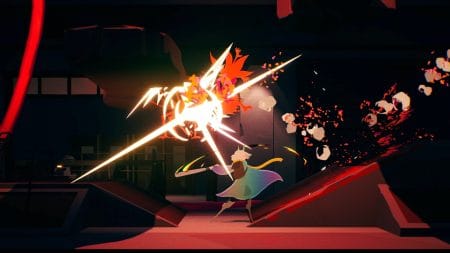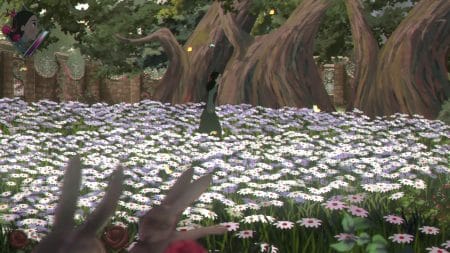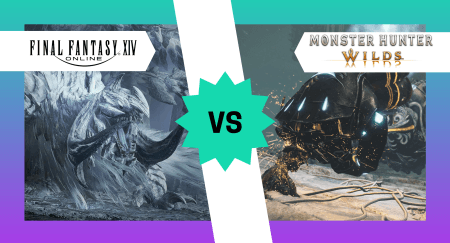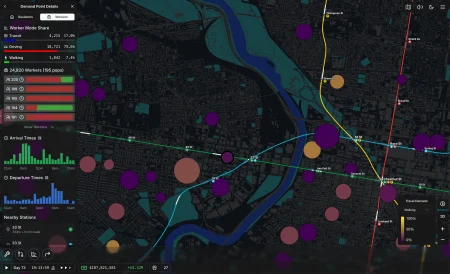I’ve never been much of a fan of collectathons. Growing up in the early aughts, I missed out on the initial craze popularized by Super Mario 64 and Banjo-Kazooie. While I eventually found my footing with the genre — Super Mario Odyssey and A Hat in Time are two all-time favorites — part of me still yearns for an era I never got to experience.
Ruffy and the Riverside, developed by Zockrates Laboratories UG and published by Phiphen Games, offers a portal back to that golden age. The game doesn’t shy away from its influences; In addition to the aforementioned classics, Ruffy pulls from the likes of Paper Mario, Crash Bandicoot, and even The Legend of Zelda: Breath of the Wild.
Add in an inventive “swap” mechanic, which tasks the player with copying and pasting various textures in the environment to progress, and Ruffy proves it’s more than just a follower. The game suffers some unfortunate setbacks — notably, a lukewarm narrative, throwaway combat, and a general lack of polish. But these issues aren’t enough to derail the fun at the center of Ruffy and the Riverside.

Only You Can Prevent Calamity
Ruffy and the Riverside stars the titular Ruffy, a bear with the power to change the world of Riverside — quite literally. With the tap of a button, players can copy one of Riverside’s many textures (water from a stream, straw from a bale of hay, etc.). Then, with the tap of another button, you can paste that texture onto an existing object, changing the latter’s properties.
After an introductory sequence that teaches Ruffy about his swap powers, he and his sidekick Pip find themselves on a journey to save Riverside from a mysterious evil. Groll, a Rubik’s Cube-shaped entity, lays siege to the land in search of a gem known as the World Core. In an initial attack, Groll scatters the letters of Riverside’s iconic sign (think “Hollywood”), leaving the World Core without its main source of power. Thus, Ruffy and Pip set off to recover these magical letters and stop Groll’s mayhem.

The story is as nonsensical as it sounds. While I try to keep expectations in check for platformer narratives (Celeste being the rare exception), Ruffy and the Riverside somehow still let me down. Its characters are forgettable, its lore lacks seasoning, and its writing, though enjoyable in short bursts, more often overstays its welcome. While there’s certainly a lot of effort to appreciate here, I often found myself skimming the dialogue so I could get back to the action.
Part of what makes the story so ineffective is its humor — or lack thereof. Games like Paper Mario, Crash Bandicoot, and Ratchet and Clank may not have riveting stories, but they do offer plenty of chuckles to keep the player engaged. Ruffy, by contrast, shies away from the edginess the genre is known for, instead opting for a happy-go-lucky tone that’s too saccharine for all but the youngest of gamers.

Tears of the Riverside
If my critique of Ruffy and the Riverside’s story seems harsh, it’s only because the rest of the game fares so much better.
As with your favorite collectathons, you’ll navigate the world of Riverside in search of various discoverables. Puzzles are strewn across the land, each hiding a different trinket — from Dreamstones (i.e., Power Stars in Mario) to magical Etoi (i.e., Koroks in Zelda). Some puzzles require rearranging a monument to match a nearby symbol; others involve jumping into a 2D drawing a la A Link Between Worlds, while others still require painting various mushrooms a certain color.
At the heart of these puzzles is Ruffy’s swap mechanic. As you may imagine, this power can be used in some creative ways. Need to cross a body of water? Copy some ice from a glacier and temporarily freeze the water. Find a stack of stone blocks? Turn them into wood, then break them apart with ease. All in all, you’ll encounter about 20 different textures you can use to manipulate the environment.

While certainly a great deal of fun, I don’t want to sell Ruffy and the Riverside as something it isn’t. Don’t go into the experience expecting to pull off crazy sequences like you might in The Legend of Zelda: Tears of the Kingdom. Puzzles are fairly linear in how they’re solved, and while there are plenty of them to tackle, they all tend to fall into one of six or seven buckets. Once you’ve sampled those categories, you’ve seen pretty much all that Ruffy and the Riverside has to offer.
And that isn’t a bad thing! To the contrary — it’s refreshing to see a game hark back to the days of classic platformers. No elaborate physics, no skill tree or stats (aside from a pair of shops where Ruffy can upgrade his health and sprint bar). Just an emphasis on solving puzzles and collecting MacGuffins. If that’s your jam, you’ll find quite a bit to like here.

Variety is the Spice…
When you’re not exploring Ruffy and the Riverside’s overworld, you’re likely engaging with the main quest. These missions — each of which entails tracking down a letter of the Riverside sign — offer quite a bit more variety than the fun-but-formulaic puzzles you’ll find out in the world.
It took me 12 hours to 100% the game, roughly half of which I spent on the main campaign. In that time, I got lost on a desert island, befriended some ghosts engaging in a friendly tombstone competition, shredded a halfpipe atop a wheel of hay, and so much more. These missions may not have impressed me with their writing, but they certainly won me over with their creativity.
Adding to the positive vibes is Ruffy’s terrific aesthetic. The game employs a striking pop-up-book aesthetic, inspired quite clearly by Paper Mario. Its soundtrack, meanwhile, ranges from your standard whimsical platformer tracks to some truly out-there jazz funk. The latter may not be for everyone, but dammit, it hit for me.

Rough Edges
While I generally had a great time with Ruffy and the Riverside, a few other issues hold the experience back.
First up: the game’s combat. Most encounters are trivial — especially if you max out Ruffy’s health — including a handful of late-game boss battles. The vast majority of these scenarios involve mashing a single attack button and rarely (if ever) leverage the swap mechanic. As with the story, I recognize combat tends to be a throwaway facet of most platformers; in Ruffy, however, it falls particularly short of the mark.
Second, and far more important, is an overall lack of polish. I’m not talking about performance; the game runs smoothly and never crashed on me. Rather, I’m referring to everything between the seams. The dialogue has some typos. Certain NPCs will repeat the same lines even after I helped them out. Respawning can be a roulette; sometimes you’ll spawn right where you were, while other times you’ll spawn in a previous zone. In a since-fixed bug, the game allowed players to continue buying health upgrades… even though nothing happened.
But the worst transgressions, by far, are the game’s map and menus. The map is barebones, with little functional utility; it doesn’t track collectables you’ve found, nor does it allow you to add custom markers or set a waypoint (thankfully, there’s an in-game compass that does the heavy-lifting). The menus, meanwhile, often lack basic accessibility options such as button text. Navigating options felt like playing charades — and certainly not the fun kind.

Final Thoughts
Ruffy and the Riverside is a challenging game to review. Its collectathon gameplay is a blast, and its mission variety deserves praise. Its audiovisual presentation is equally commendable, paying loving homage to the games that inspired it. However, the elements that surround the core experience — the story, the combat, the menus — chip away at the fun.
Ultimately, I enjoyed my time with Ruffy and the Riverside and happily worked to see and do everything it had to offer. I didn’t find its issues game-breaking, but my experience may differ from yours, depending on how much you’re willing to prioritize charm over polish.
Hopefully, Zockrates Laboratories UG can use Ruffy and the Riverside as a springboard to greater heights. What’s here is a welcome addition to the collectathon genre; just keep your expectations in check before you jump in.
Score: 7.5/10
Ruffy and the Riverside, developed by Zockrates Laboratories UG and published by Phiphen Games, is available now for PC, Mac, Linux, PlayStation 5, Xbox Series X/S, Nintendo Switch 2, PlayStation 4, Xbox One, and Nintendo Switch. MSRP: $19.99. Version reviewed: PC (via Steam Deck).
David is the founder of The Punished Backlog. He has a problem finishing games he starts.
Just beat: Donkey Kong Bananza.
Working on: Hollow Knight: Silksong.
Can't wait for: Metroid Prime 4: Beyond.
Follow David on Twitter at @David_Silbert to keep up to date with all things The Punished Backlog.











